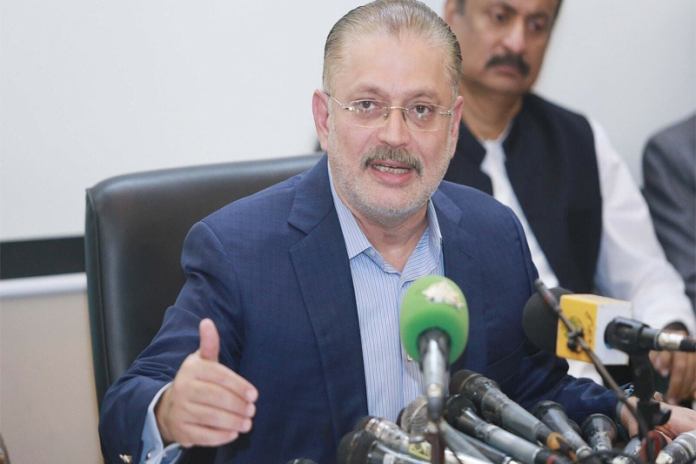Energy prices taking toll on development

- 126
- 0
The federal government had decided a few years ago that the prices of petroleum products would be fixed every fortnight keeping in view the trend of the global market.
Since then, on the fifteenth and last day of every month, the old rate is maintained or the new rate is announced. Due to ongoing tension and crisis in the Middle East, the government has announced the new prices of petroleum products for the next fifteen days (October 16 to October 31). The price of diesel has been increased by five rupees, after which the new price of high speed diesel has become 251 rupees 29 paise per liter.
The price of petrol remains at Rs 247 three paise per litre. In the global market, the price of petrol has increased by an average of $2.8 per barrel and the price of high-speed diesel by seven dollars per barrel in the last two weeks. The global price of petrol is around 79 dollars per barrel and diesel prices have gone up to 87.5 dollars per barrel. In the recent fortnight, the import premium on petrol and high-speed diesel remained stable at $8.7 and $5 per barrel, respectively. During the last few months, the prices of petroleum products continued to decrease in the international markets, due to which the domestic prices also continued to decrease. From June 1, 2024 till now, the government has reduced the price of petrol by a total of Rs. It has been observed that despite the decrease in petrol products, the burden of inflation on the people does not decrease.
All possible measures should be taken in this regard as well. Ogra has proposed to increase the profit of oil marketing companies on petrol and diesel to Rs.922 paise per liter and dealers' profit to be increased to Rs.10.4 paise. As a matter of fact, the energy crisis in the form of high petrol and electricity and gas prices, the common man is finding it difficult to make both ends meet. Economists believe that due to the current electricity crisis, Pakistan is suffering from economic recession. Due to this crisis, poverty is continuously increasing and the life of the common man is deteriorating. According to the economic survey of 2019, every Pakistani used to spend 7% of his income on electricity and gas, which is now around 10%. In comparison, developed and developing countries spend an average of 5% in this regard. According to the 2022 report of the International Energy Agency, Mexico spends 5.5% of energy, Indonesia 5%, Great Britain 4.8%, while the United States and Canada only 3%. \ Despite spending more per capita on energy than other countries, each Pakistani consumes only 3895 kilowatts of electricity in a year, which is one of the lowest energy consumption in the world. While Iran, Eastern Europe and China consume 10 times more electricity per capita than us. And even India's per capita energy consumption is twice as high as ours. On the other hand, our cost of generating electricity is the highest in the region because about 60% of electricity is generated from imported oil, furnace oil, LNG and imported coal, while only 40% is generated from hydro, nuclear, solar, wind and biogas.
It should be remembered that the cost of generating electricity from Thar coal is 12 rupees per unit while the cost of electricity from imported coal is 25 rupees per unit. Here it is very worrying that our rulers are more inclined to buy electricity from IPPs. There is no focus on alternative sources of energy, nor are they looking for new wind power generation corridors. That is why Pakistan's biggest problem today is to give 2 trillion rupees to forty IPPs. Currently, various IPPs are completely closed, but the government of Pakistan is continuously paying them capacity. Remember that from 2013 to 2022, 36 mills were installed in the wind power corridor between Gharo and Jhampir near Karachi, from where today 1845 megawatts of electricity is also being generated. Experts believe that if more mills are installed in this corridor, the problem of cheap electricity in Pakistan can be solved forever.
These mills get the amount of money the government buys from them and there is no mention of capacity charges in their contract. It is also surprising that owners of wind power mills are repeatedly asked by government agencies to generate minimum power from their mills. So far, we have not built the infrastructure through which the electricity generated here can be connected to the national grid. Even today 27 new energy plants that can generate 1875 megawatts of electricity from wind, while on the other hand, the government has planned to add 1000 kilowatts of electricity from windmills to the national grid by 2030. Economists around the world recognize the fact that the country in which there will be an energy crisis, that country cannot be prosperous because big industrialization cannot go ahead without it. Today in Pakistan, about four million new youths are ready for employment every year, for which it is necessary that we set up industries on a large scale. We can generate electricity from Thar coal at Rs.4 per kilowatt, which can also be used in industries that consume a lot of electricity, including steel mills, aluminum smelting and petrochemicals industries. Also, shifting oil-fired power plants to Thar coal would require more coal to do so, at an estimated cost of $1.2 billion over a five-year period, but in this way, we will convert 90% of our energy into local energy. Today, Pakistan imports energy worth 15 billion dollars, which is a third or a fourth of our total imports. The energy being imported into Pakistan is either in the form of petrol or diesel, of which 80% is used by transport. Today, there are 2 crore motorcycles running in Pakistan, which are are using petrol. The government of Pakistan should convert these motorcycles and government-run vehicles and buses to electricity as soon as possible.

















































